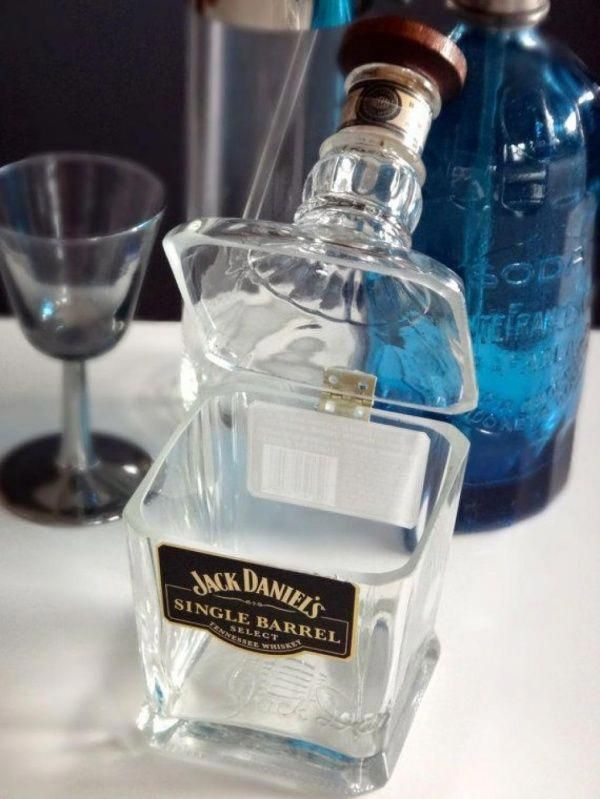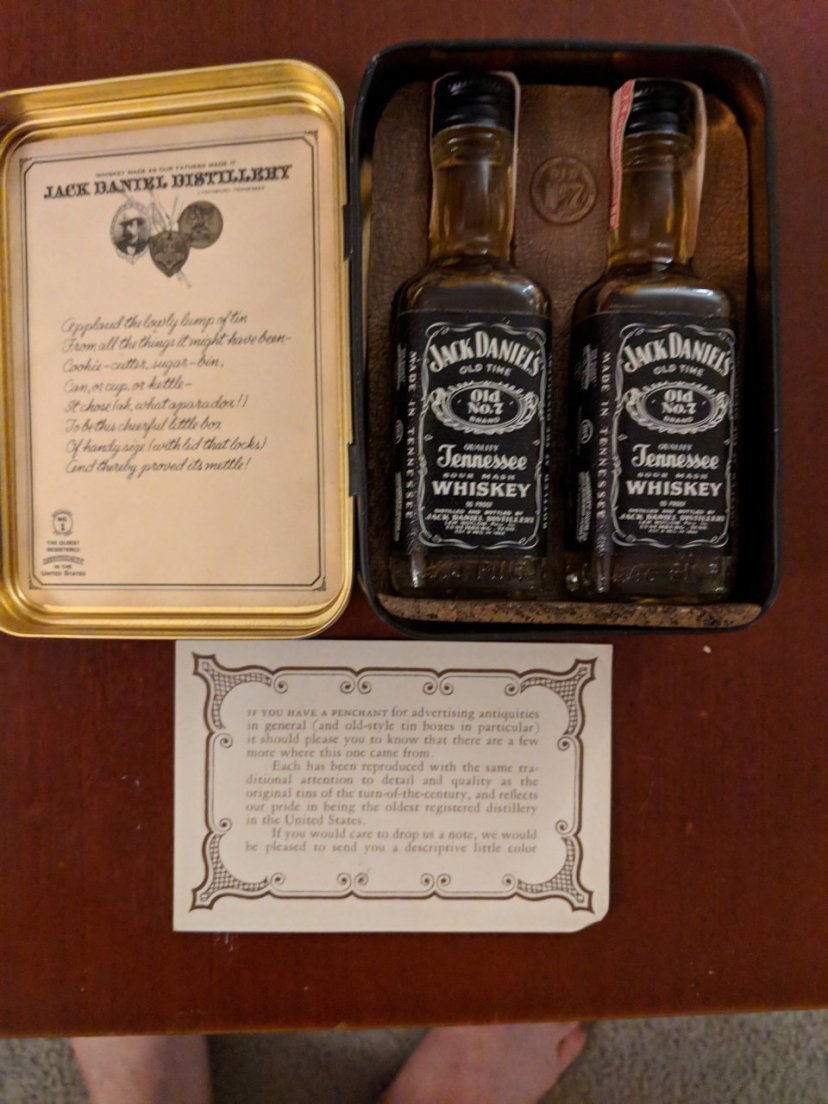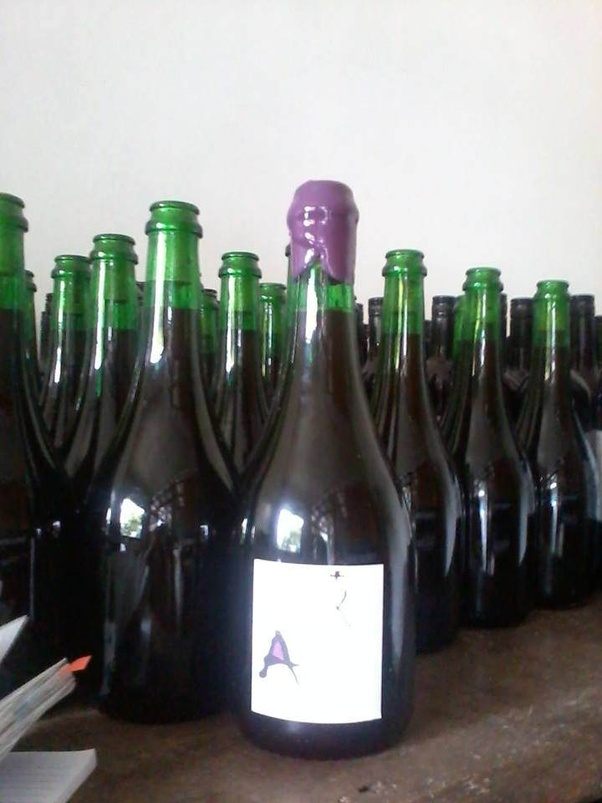Cognac Vs Whiskey Vs Armagnac
- Cognac is distilled twice in copper stills, while Armagnac is distilled once in a column still, similar to bourbon.
- Cognac and Armagnac use most of the same grapes, with one or two additional varieties for Armagnac.
- Whiskey is produced either with a grain or malted barley, while the other two are produced with grapes.
Similar Drinks & Cognac Substitutes
Brandy is a surprisingly common alcoholic spirit and there are many varieties around the world with their own techniques. As mentioned above, cognac is a brandy. However, it is a brandy that is produced in a specific region while following regulated techniques.
Armagnac is cognacs closest relatives and they share many similarities but a number of key differences, too. For instance, Armagnac is often made using a column still while cognac can only be produced with a copper pot still.
Otherwise, there are a number of eaux-de-vie de vin, which are distilled in a similar way to cognac but often unaged.
Finally, grappa is not technically an eau-de-vie de vin as its produced using the pomace rather than the juice. Nevertheless, some aged grappas may occasionally be reminiscent of cognac.
What Is The Best Cognac For The Money
Here, the best cognacs available. Best Overall: Frapin Château Fontpinot XO. Best VS: Bache-Gabrielsen Tre Kors. Best VSOP: Hardy VSOP. Best Innovation: Camus Ile de Ré Fine Island. Best Double Cask: Pierre Ferrand Réserve. Best Under $50: Jean Fillioux Coq. Best for a Sidecar: Pierre Ferrand Ambré.
Read Also: How To Drink Gin And Tonic
Where Does Cognac Get Its Name
By the next century, double distillation came about, and the makers realized Brandy is much better if it rests in oak barrels for a while, and soon, Brandy from Cognac took its regions name. Despite being born in France only 3% of Cognac is sold there. Almost all of it is exported, mostly to the United States, Singapore, and China.
What Makes Cognac Special

Cognac is considered the most refined and sophisticated out of all the spirits. You can identify this exquisite spirit for its incredible bouquet and harmonious combination with power, warmth, and subtlety.
In a way, it exhibits some characteristics of other fantastic liquors, mainly wine and whiskey, but it still manages to provide unique qualities that define it as it is.
Recommended Reading: How To Pronounce Espolon Tequila
Cognac Is Brandy Brandy Is Only Sometimes Cognac
According to French law, , Cognac is a brandy distilled from wine made from grapes, in the region surrounding the tiny town of Cognac. Similar to Champagne, if its not produced within Cognacs six crus in the Charente and Charente-Maritime departments of southwestern France, then it may be brandy, and it may still taste good, but its certainly not Cognac.
Whats Special About Cognac
Really wanna impress your friends next time youre drinking together? Here are some fun facts that make for sparkling Cognac conversation:
funky, umami flavorrancio“It’s close to caramel, but a little bitter it tastes a little like a bitter nut,”priciest1858 Cuvée LéonieHennessyCognacrap songs the angels share.1870s, insects wreaked havoc Edgar Allan Poe Big Four brands90% Famous cocktails
Like what you read about Cognac and thirsty for more? Try a bottle of Frérot.
You May Like: What Drinks To Make With Peanut Butter Whiskey
So Is Hennessy Brandyand Cognac
It sure is! See, youre getting it now.
Hennessy is overwhelmingly the most popular brand of cognac in the world, accounting for almost half of overall cognac sales and production in the world. Its also an incredibly old brand, with origins reaching back all the way to 1765.
Other cognac brands of note include Remy Martin, Courvoisier, and . If youve listened to rap in the past quarter-century, youve probably heard these names dropped a lotand they are all from the same diminutive region of France. .
Is Cognac A Whiskey Or A Wine
No and no. Cognac isn’t considered whiskey since the latter is made with grape/fruit wine, while the former is made with grain. Both are products of distillation, but whiskeys are only distilled once while cognacs are distilled twice.
Moreover, Cognacs aren’t necessarily considered “wine,” even though it’s made with grapes. If you ferment grapes, it becomes wine.
But to make Cognac, the process doesn’t just stop at fermentation. The fermented wine is to be distilled twice in copper pot stills. That’s why Cognac and wine aren’t the same things.
Recommended Reading: What To Mix Salted Caramel Whiskey With
What Are The Most Popular Brands
In the United States, there are several popular brands that produce and distribute the beverage. Many of these companies have gained notoriety in popular culture and are readily available in bars, liquor stores, and supermarkets worldwide. Courvoisier, Hennessey, and Rémy Martin are three of the most well-known brands in the United States.
The tradition of making Cognac is quite an interesting one, and this overview is just a quick look at the storied process. If youre interested in learning more, you can do some research behind the biggest brands and learn how your favorite kind is made.
How Are Brandy And Cognac Made
Because brandy is an overarching category, it isnt bound by a strict production process. That said, all forms of brandy start with the fermentation of grape juice or other fruit juices , followed by distillation.
Fine brandies will use quality wine grapes as a source, get produced in small batches, undergo double distillation inside pot stills, and age in oak casks for two years and up before bottling. Most bottles of fine brandy will contain a blend of various vintages.
For cognac, the production process is far more rigid and consistent, though quality can still vary. First comes the fermentation of white grapes from the Cognac region. Ugni Blanc grapes are the most ubiquitous and therefore the most commonly used as a base ingredient. After fermentation, the wine is double distilled between October 1 and March 31.
Next, the young spiritalso known as eau de vie undergoes a unique aging process for a minimum of two years. During this aging process, the eau de vie starts in a new French oak barrel before getting redistributed to older barrels so as not to suck up too much wood. The darkened spirit is then typically blended with other vintages by a master blender or team of master blenders. The married liquor usually undergoes additional maturation before bottling, while the age statement on the bottle reflects the youngest vintage in the blend.
Read Also: What Kind Of Rum For Mai Tai
The 4 Grades Of Cognac:
Cognac is graded depending on how it was produced and the ages of the Cognac used:
Armagnac Vs Cognac : Age Counts

Cognac is a blend of brandy of different ages. Its label indicates the aging period of the youngest brandy used in the blend.
Cognacs are classified by age of aging according to standardized terms controlled by the BNIC :
- VS : at least 2 years of aging in wood
- Superior : at least 3 years of aging in wood
- VSOP : at least 4 years of aging in wood
- Vieille Réserve : at least 5 years of aging in wood
- Napoleon : at least 6 years of aging in wood
- XO : at least 10 years of aging in wood
Behind these acronyms, however, are the specific aging characteristics of each producer.
Armagnacs, which can be blended or vintage, are not subject to the age count standards like Cognac. And for good reason!
- Like Cognac, Armagnac can be made from a blend of brandy of different ages. Its label then indicates an age count which attests to the duration of aging of the youngest brandy in the composition of the blend. This similarity with Cognac explains why some Armagnac houses choose to borrow the names of Cognac for their blends, a practice tolerated by the BNIA .
The selection of these Unique Pieces is rigorous and demanding and follows a meticulous tasting process that lasts 10 years.
Recommended Reading: Who Makes Bombay Sapphire Gin
What Are Brandy And Cognac Made From
Lets start big and work our way down. On that note, brandy is a general category pertaining to any distilled spirit made from fermented fruit juice. The most common fruits used are grapes, but you can also find apple brandy, pear brandy, cherry brandy, fruit brandy , and other variations. Brandy is made around the world and therefore untethered to any specific region.
Cognac liquor, on the other hand, is a specific type of brandy thats made according to strict regulations. For starters, it must be produced using white grapes from one of six different terroirs in the Cognac region of Southwest France. Just a reminder: terroir is a fancy word for the natural environment in which wine is produced. Yes, that means cognac liquor is a form of distilled wine. The distillation season runs from October 1 to March 31, and all cognac must be distilled twice in a copper pot still.
The Distillation Of Wine And Creation Of Spirits
To put it in a nutshell, the distillation process aims at extracting the alcohol contained in wines to obtain spirits practically speaking, this involves heating wine up to 78.3°C which is the boiling temperature of ethanol, to separate it from water which boils-up at 100°C along with other components. Alcohol vapours will evaporate first, then cool down by passing through a condensator to regain a liquid shape. In the case of Cognac, this process is repeated twice to obtain the final product, this is the principle of double-distillation. The distillation process is completed when most of the alcohol contained in the distilled wine has been extracted, leaving nothing but wine residues behind or vinasses as is it called in the Cognac region.
Not all spirits obtained through the distillation process will make it into the final product however! Specific portions will be separated by the distiller, to be discarded or distilled yet another time. Simply put, the heads or first liters of alcohol obtained at the early stage of the distillation process and tails or last liters obtained will be cut from the spirits heart, which is the final product. This process of separating alcohol known as the cut varies depending on Distilleries tradition or the know-how of a master-distiller and often grants Cognac some very specific characteristics. To dig deeper into this subject, you can read our article about Cognac Distillation.
You May Like: How To Order Vodka Soda
Only Certain Grapes Need Apply
Only three grape varieties are permitted in the production of Cognac: Ugni Blanc , Folle Blanche, and Colombard. Following strict AOC guidelines, the grapes must be harvested in October, fermented for a couple weeks using native wild yeast, and then distilled in the five months between November 1 and March 31. The white base wine is only about 8% alcohol by volume and said to be dry, acidic, and pretty much undrinkablethe magic happens post-distillation.
Cognac : A Long History
In the 18th century, the English and Dutch imported a lot of Charente wine, but this one, sometimes of poor quality, didnt stand the journey and arrived with a bad taste. In order to preserve it better the Dutch had the idea of distilling it, a practice which had two advantages: on the one hand the product was better preserved, on the other hand it was more concentrated which allowed to pay less taxes. It was not until it arrived in Holland that it was diluted in water. In doing so, we realized that the distilled wine improved during the transport in wooden barrels the bases for the making of cognac were laid even if its elaboration is a little more complex as you will see.
Read Also: What Is The Drink With Ginger Beer And Vodka
Question: What Is Cognac Made Out Of
Cognac is a specific type of brandy produced from distilled white wine. It must be distilled twice, using copper pot stills, and aged in French oak barrels for a minimum of two years. Cognacs distillation season lasts from October 1 through March 31, a five-month annual window.
Casking The Distilled Brandy
-
6 The eau de vie is piped into oak casks. The casks are housed in large damp warehouses, or cooperages. The vintage, cru, and date are marked on each cask with chalk.
Generally speaking, the brandy is first stored in newer casks for periods between one and two years. The amount of time is dependent on the level of tannin that is desired. Tannin is strongest in new oak, so the brandy must possess enough character to absorb large amounts of tannin.
Also Check: Is Bacardi Coconut Rum Gluten Free
How To Choose A Cognac
Between all the houses and all the varieties of cognac it is sometimes difficult to find your way around. The choice of a cognac will depend on your palate and the use you wish to make of it. Used in cooking or in cocktails, young cognacs will be sufficient. For a digestive tasting, an XO is preferred.
Also keep in mind that unlike wine, cognac does not age once in the bottle. It therefore keeps all its life the age it was when it was put under glass.
The bottles sometimes mention an additional geographical name indicating the precise area of origin of the blend . This gives an idea of the soil in which the grape was formed:
- Grande and Petite Champagne are the heart of the vineyard. They produce fine brandies with a floral flavour,
- The Borderies is a terroir near the town of Cognac, with a violet and iris scent,
- The Fins Bois, are located in a more remote area generally used for cognacs with short ageing,
- The Bons Bois are vines from forested regions or that grow alongside agricultural crops,
- The Bois Ordinaires have sandy soils, closer to the ocean.
/
Are Brandy And Cognac The Same

Short answer: yes. Long answer: yes. Well, sort of. All Cognac is brandy but all brandy is not Cognac. Similar to how all Champagne is sparkling wine but all sparkling wine is not Champagne. Are we seeing a trend with our French friends?!
Victor Hugo, that romantically inclined gentleman who wrote melodramatic tales like Les Misérables, refers to cognac as the liquor of the gods. With such a repertoire of art under his belt, Im inclined to believe him. So, in order for this godly spirit to be cognac, it must come from the Cognac region, which youll find in the Southwest of France.
It is believed that the Cognac region has a superior terroir, which means it makes a superior brandy. This is the biggest difference between brandy and cognac brandy can be made anywhere in the world. So, where does Cognac come from? Cognac can only be made in Cognac. Additionally, there are other subtle yet important differences that elevate Cognac above its brandy brethren.
You May Like: How To Sell Old Whiskey
What Are The Benefits Of Drinking Cognac
Unlike a variety of other liqueurs and spirits, cognac was never initially conceived as a medicinal aid. Indeed, it has always been regarded as a beverage for pleasure. Nevertheless, it has been suggested that cognac might have a few health benefits as long as its consumed in moderation.
For example, cognac may contain sufficient antioxidants to improve heart and blood circulation as well as protect against either gallstones or type 2 diabetes. However, cognac must be respected like any alcoholic spirits and too much may impact your health.
Visit The Martell House
If you go to the town of Cognac, you will inevitably come across many producers who offer tours. These allow you to discover the production methods and often to taste different varieties of cognac.
For my part I went to visit the Martell house, the oldest of the cognac houses created in 1715 by the Englishman Jean Martell. The visit is done in the old cellars and can be done in half an hour or half a day depending on how much time you want to spend there.
You will discover the Houses heritage, its know-how and the angels share, a section that explores the techniques used to make cognac. An experience that ends with a tasting session will allow you to test the different products of the House, from the most classic to the most original such as the Blue swift, a derivative of cognac whose ageing has been completed in Kentucky bourbon barrels, which deprives it of the cognac appellation but gives it a powerful structure ideal for cocktails. You can also make your own blending and bottle your own cognac.
Not open to visitors, here is the tasting area of the Cellar Master, the Master Blender and their team. It is here, in this old cellar, that they taste and document every day the eaux-de-vie to elaborate the different cognacs of the Martell range.
To complete your visit, dont miss a visit to the Martell Corporate Foundation, a cultural institution dedicated to contemporary creation that is currently presenting an exciting design exhibition.
You May Like: What’s The Best Thing To Mix With Tequila